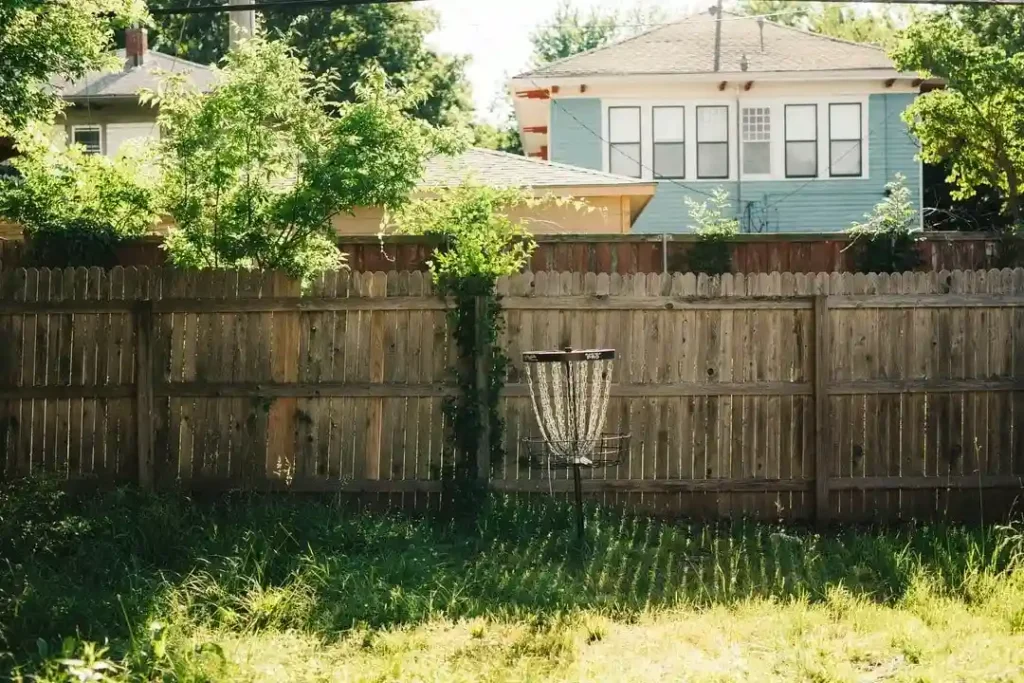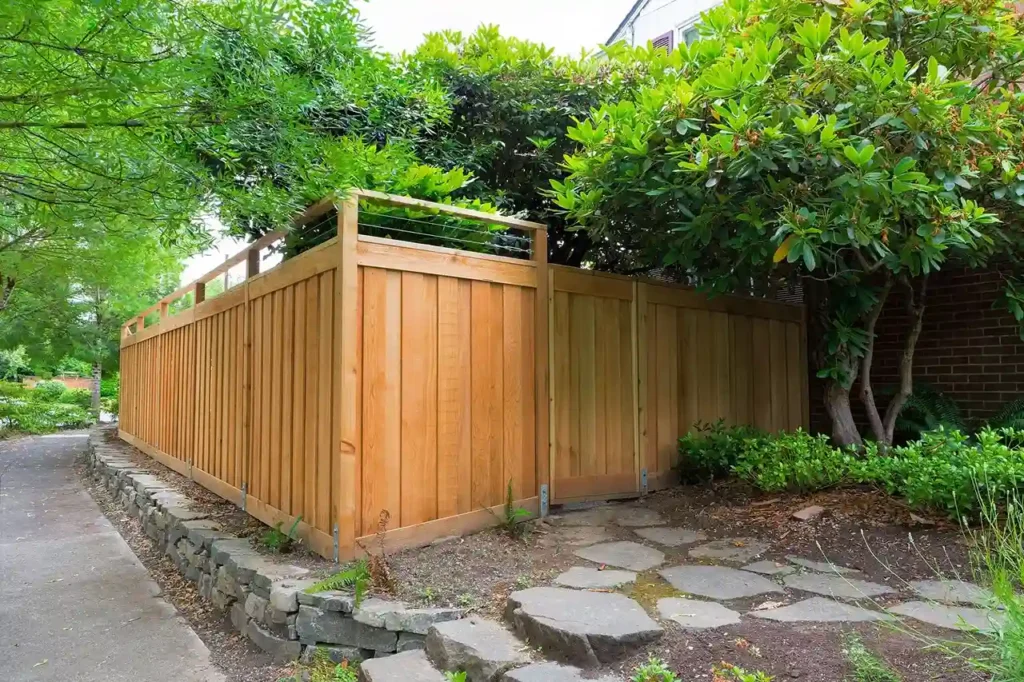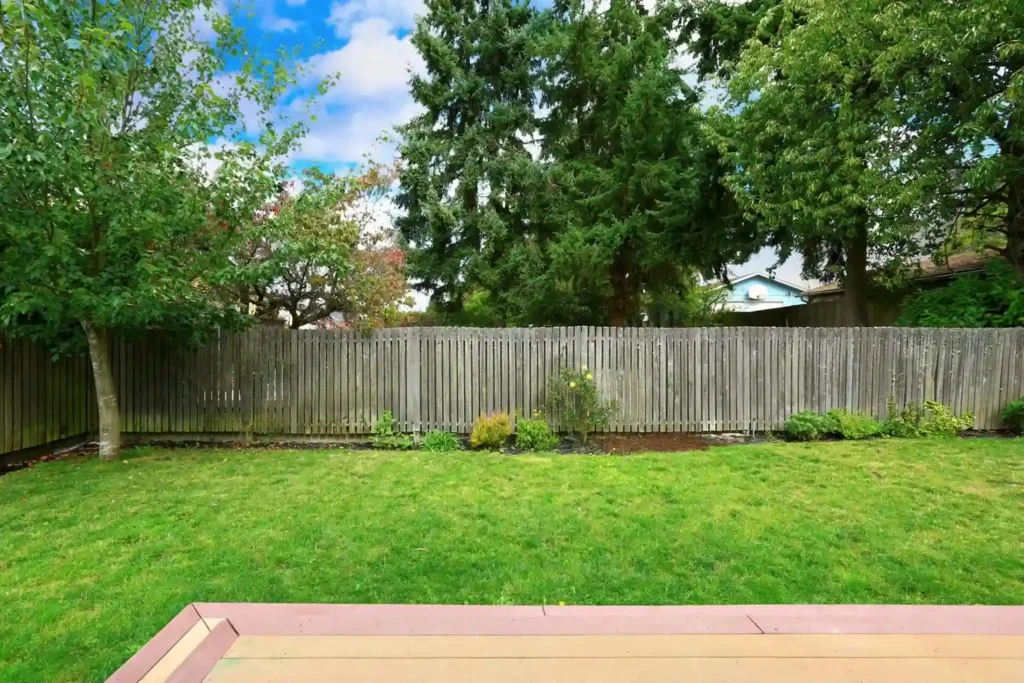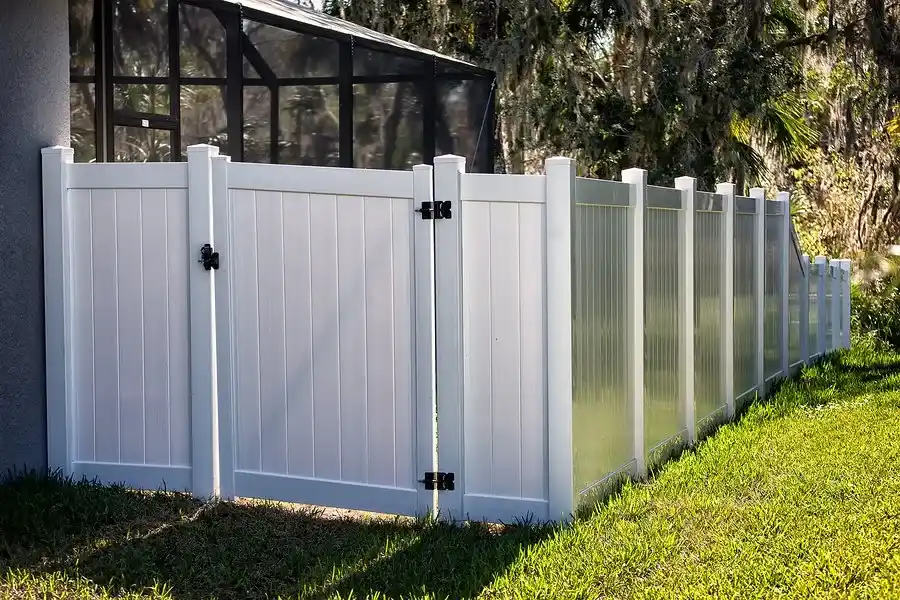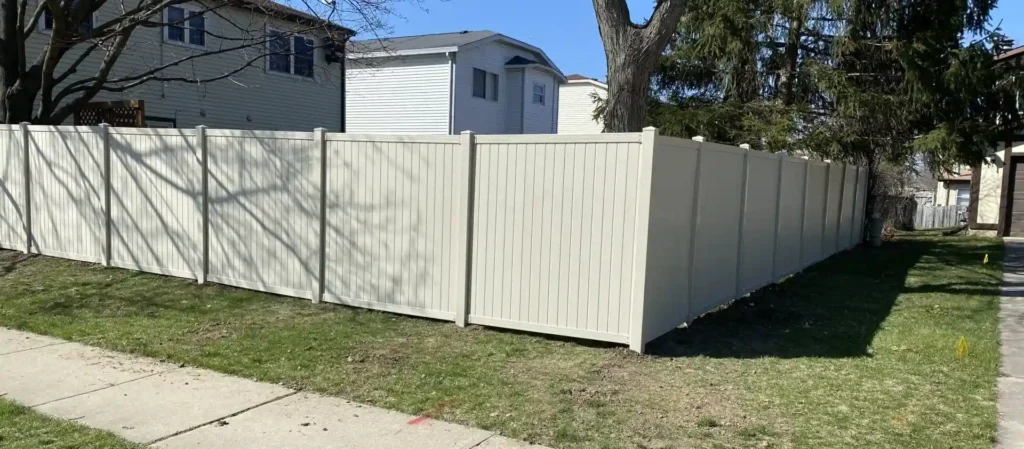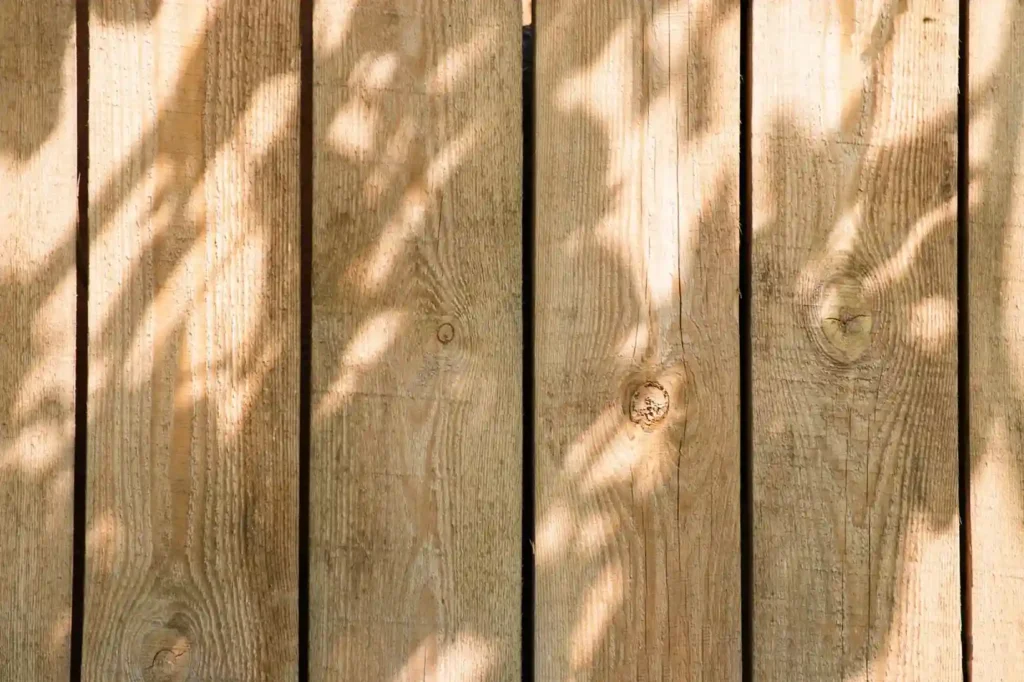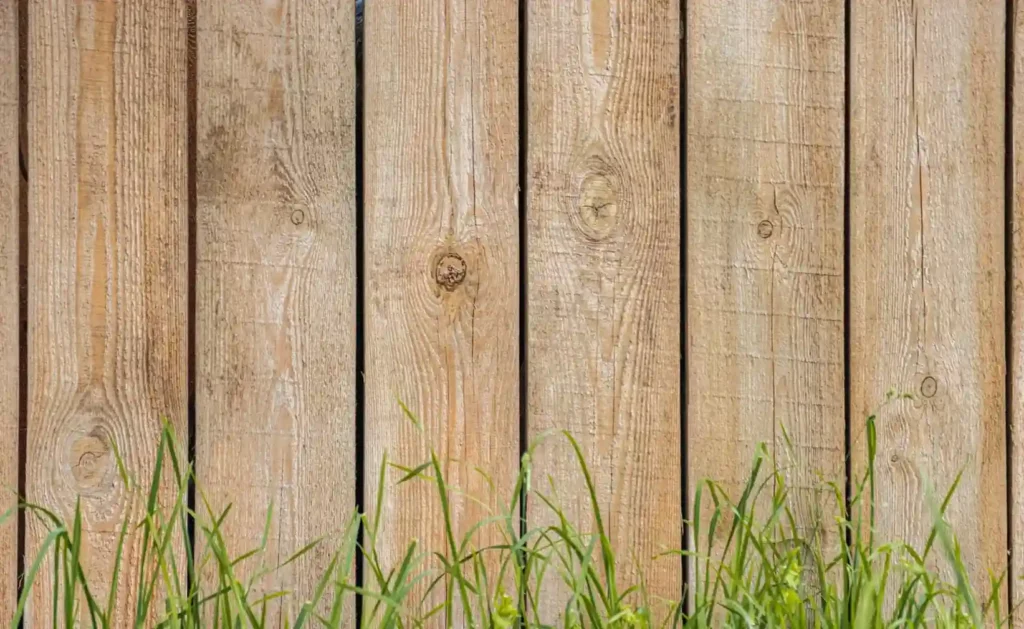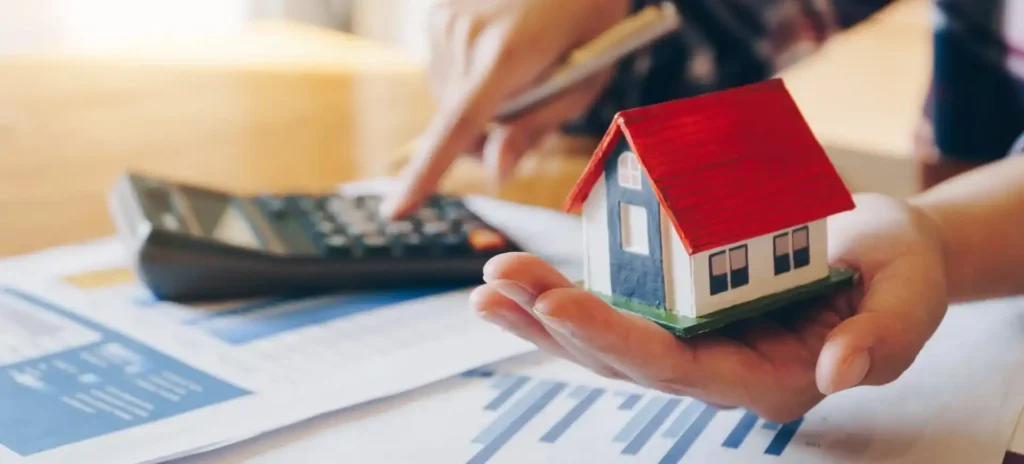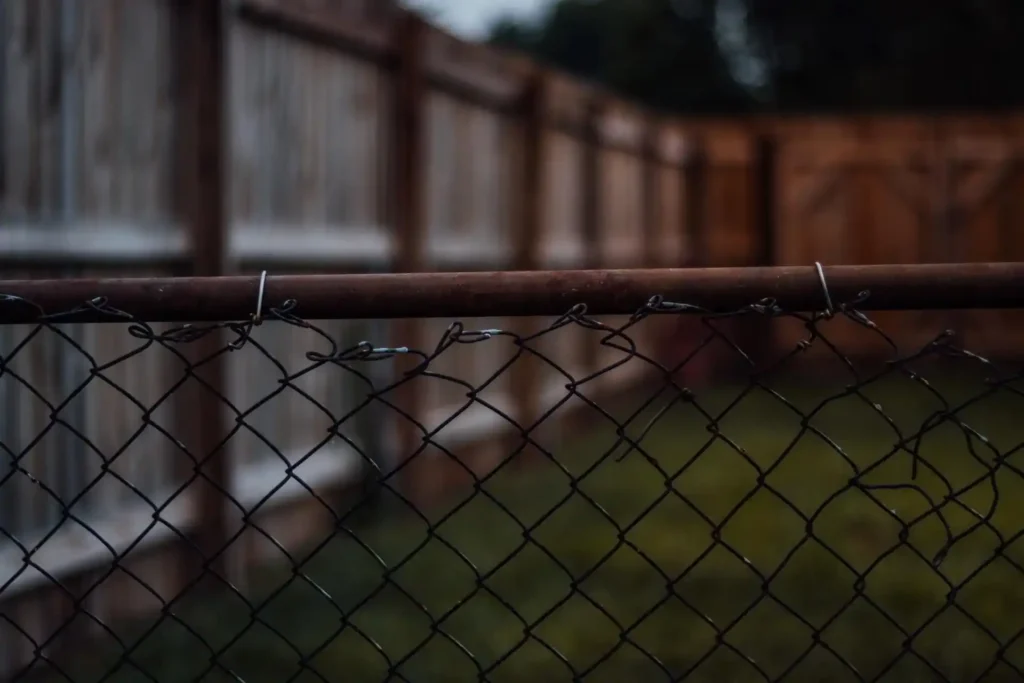What is the Cheapest Fence to Buy?
Fences increase protection and privacy in a front or backyard space, and they can also offer aesthetic value. The level of seclusion added by a yard fence is entirely up to you, as is the money. Though yard fencing might be costly, we’ve compiled a list of inexpensive fence designs to meet practically any budget. Whether you’re looking for inexpensive yard fences for general use or inexpensive privacy fence ideas for added seclusion, we have cheap fence options for you.
Low-Cost Fence Designs: Cheap Fence Ideas
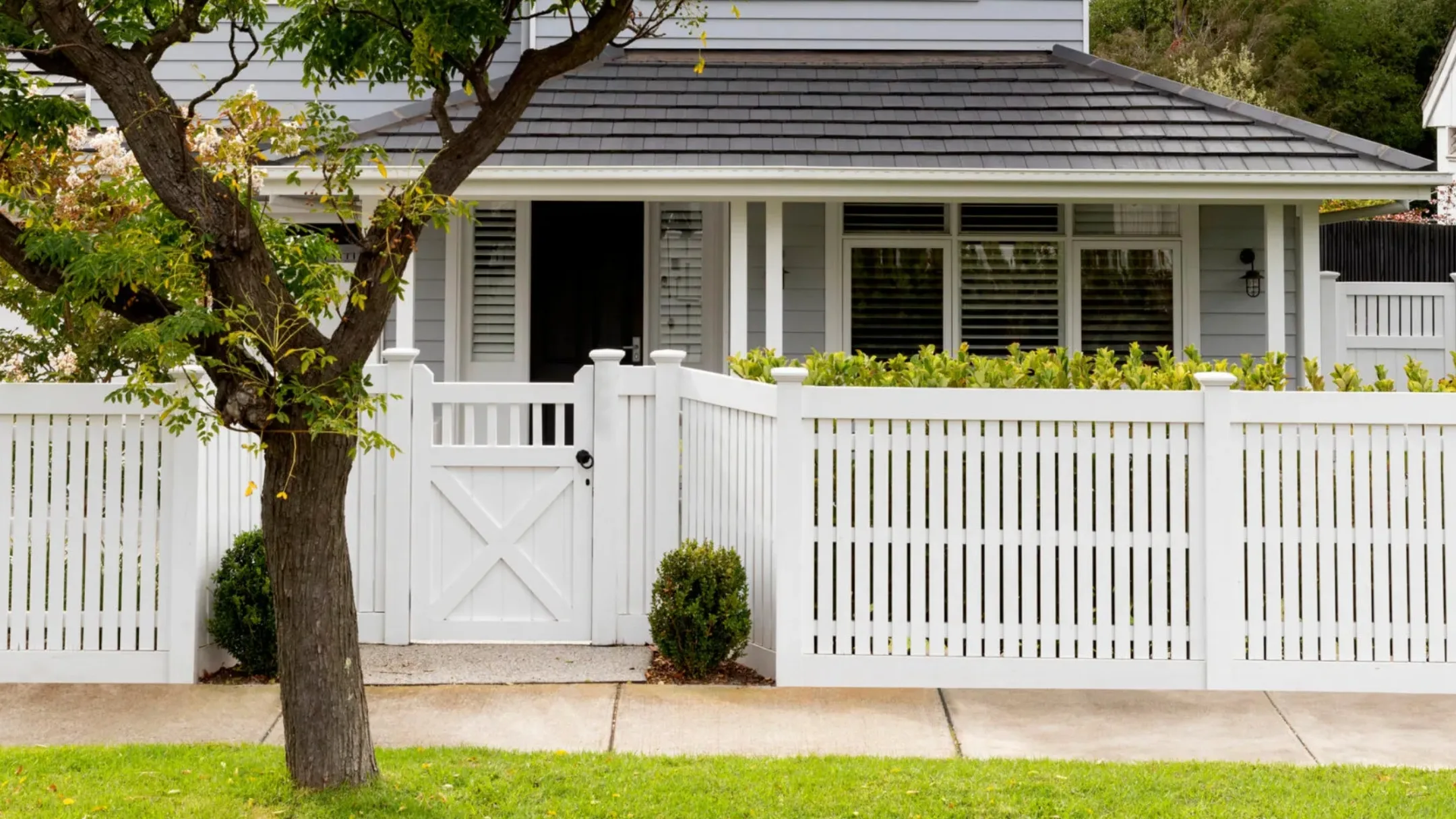
1. Fence Made of Corrugated Steel
Corrugated steel is also a great choice for those searching for inexpensive privacy fence ideas with a modern touch. Recycling existing materials is an excellent dual-purpose method for constructing low-cost fencing. If you’re knocking down an old metal shed or barn, you could already have the materials. If not, corrugated metal panels are affordable and widely available. Use them as-is for a nostalgic look, or paint them black for a more modern look.
Expect to spend: nothing if repurposed up to $25 per linear foot for decoration.
2. Fence Made of Pallets
Pallets are a popular DIY material, particularly for building a yard fence. They begin as flat transport structures to facilitate stacking and lifting heavy things. They can be cut into slats or left whole for the job. Pallets make excellent yard fencing since the spaces between the slats are often small. This DIY approach is one of the best cheap yard fences that provides both affordability and versatility.
Material Cost: $0–$5/linear foot
Best For: Best for garden enclosures, DIY projects, decorative barriers
Pros:
- Ultra-low cost (upcycled wood);
- Unique, rustic look;
- Eco-friendly
Cons:
- Labor-intensive if DIY;
- Wood may deteriorate quickly
Estimate Your Fence Cost — Fast & Free
Get a Quick Quote With Estimate in Minutes.
3. Separate Railing or Split Rail Fencing
Farms and ranches are the most common places to encounter split rail fences. They were an easy and inexpensive technique to confine animals and mark off property borders because they were very cheap fencing. But you don’t have to live on the range to appreciate split rail fences’ rustic appearance. Save money by crafting your own or purchasing them ready to hang.
Material Cost: $7–$15/linear foot
Best For: Large open yards, rural properties
Pros:
- Simple, rustic appearance;
- Easy DIY installation;
- Cost-effective for property boundaries
Cons:
- Offers minimal privacy;
- Requires occasional wood sealing
4. Chain Link
Some people find chain link fences to be unsightly, although they are an excellent choice for low-cost fencing. Why use chain link unless you’re enclosing a new puppy? Its simplicity lends itself to a wide range of applications. Getting chain links in different colors or matching them with wood accents rapidly makes a huge difference in terms of aesthetics.
Material Cost: $5–$15/linear foot
Best For: Pet enclosures, boundary marking
Pros:
- Durable and weather-resistant;
- Low maintenance;
- Quick and easy installation
Cons:
- Industrial appearance;
- Minimal privacy (optional slats help)
5. Horse Fence with Four rails
Another style of backyard fence that is common in ranches or farmhouses is the 4-rail horse fence. It’s similar to a split rail, but the wooden pieces are closer together and larger, making the spaces between smaller and providing additional security.
Material Cost: $7–$10/linear foot
Best Use: Secure fencing for animals and rural properties
Pros:
- More secure than split rail;
- Durable wood rails;
- Good for containment
Cons:
- Less privacy;
- Requires maintenance;
- Moderate cost
Estimate Your Fence Cost — Fast & Free
Get a Quick Quote With Estimate in Minutes.
6. Bamboo Trellises
In warmer climates, you can grow your bamboo fence by planting it along the appropriate line and allowing it to develop. If you like dry bamboo, plant it in a suitable location until it reaches the desired height. Then chop it down, dry it, and erect it as a fence. Bamboo grows extremely quickly, reaching heights of 36 inches in 24 hours. Bamboo fencing can also be purchased in pre-made coils. Bamboo repels deer, which is a plus if you live near wildlife.
Material Cost: $4.60–$10/linear foot
Best Use: Privacy and decorative garden fencing
Pros:
- Fast-growing bamboo;
- Natural privacy;
- Attractive and eco-friendly
Cons:
- Needs regular maintenance;
- Can be invasive;
- May require support
7. Forged Iron or Wrought Iron
Wrought iron fencing became popular during the Industrial Age, thus it might have a period appearance. It is a popular European type that has an artistic aspect, but it is not the most economical fencing. Choose between elaborate balusters and thicker, more obviously vertical posts. Combine it with hedging to keep expenses low.
Material Cost: $25–$40/linear foot
Best For: Decorative security fencing
Pros:
- Long-lasting and strong;
- Classic, elegant appearance;
- Low maintenance with coatings
Cons:
- High upfront cost;
- Less privacy;
- Professional installation required
8. Vinyl Fencing
Despite a formerly negative image for appearing cheaper than wood or metal, vinyl fences have become a more popular yard fence alternative in recent years. However, when done well, modern vinyl may be both attractive and sophisticated. It’s long-lasting and simple to put together, resistant to termites, and incredibly light. Vinyl is available in a variety of styles and can be painted in a variety of colors.
Material Cost: $15–$35/linear foot
Best For: Low-maintenance privacy or decorative fencing
Pros:
- Durable, weather resistant;
- Requires almost no maintenance;
- Variety of styles and colors
Cons:
- Higher upfront cost than wood or metal;
- Can crack in extreme cold;
- Professional installation usually needed
Estimate Your Fence Cost — Fast & Free
Get a Quick Quote With Estimate in Minutes.
9. Mesh and Split rail
Like the pricing and appearance of a split rail fence but find it insufficiently secure? Combine split rail with mesh if you wish to cover gaps or have a fence that keeps the dog within. They’re also helpful for keeping predators away from a produce garden. For homeowners looking for inexpensive privacy fence ideas, adding mesh to a split rail design enhances security without overspending. Mesh and Split rail fence can be the cheapest fence option you can use for yard, although it is not an option as a privacy fence.
Material Cost: $3–$8/linear foot
Best For: Gardens, small animal enclosures
Pros:
- Affordable and easy to install;
- Good visibility;
- Versatile uses
Cons:
- Limited privacy;
- Can rust if not coated;
- Less secure for larger animals
10. Concrete Fence or Retaining Wall Brick
When protection and privacy are important, concrete fencing can be a cost-effective choice. For maximum coverage, use pure concrete, or add brick or wood elements to break up the design. You might need to hire an expert for this one, which could raise the cost. We at BuyaFence.com specialize in retaining wall brick installation, contact us for a quote!
Material Cost: $20–$40/linear foot
Best For: High security and privacy
Pros:
- Very durable;
- Excellent sound barrier and privacy;
- Minimal maintenance
Cons:
- High initial cost;
- May require professional construction;
- Less flexible design
Estimate Your Fence Cost — Fast & Free
Get a Quick Quote With Estimate in Minutes.
11. Barbed Wire
Barbed wire is most commonly associated with farming and is employed for security rather than beauty. A barbed wire yard fence can be used to keep animals or people out of an area for a low cost. Barbed Wire fences are the cheapest as it is used by farmers to protect their fields from stray animals.
Material Cost: $0.10–$2/linear foot
Best For: Agricultural or temporary fencing
Pros:
- Extremely affordable;
- Easy to install
Cons:
- Short lifespan;
- Not visually appealing;
- Minimal security
12. Reuse and Recycle Leftovers
Using recycled materials may be both inexpensive and environmentally friendly. Recycled materials can range from rusty metal sheets creatively stitched together to the still-solid fragments of an old wooden fence arranged in varied lengths and painted.
Material Cost: Minimal material cost
Best Use: Eco-conscious DIY fencing
Pros:
- Very affordable;
- Environmentally friendly;
- Unique designs possible
Cons:
- Varies in durability and appearance;
- Labor-intensive
13. Living Fences
Growing your own “living fence” as an alternate type of yard fencing if you have a green thumb and wish to be eco-friendly. Hedge-based living fences are one of the most natural inexpensive privacy fence ideas that also contribute to an eco-friendly yard. Hedge plants like privet or boxwood are usually your best bet. You can go to a store like Home Depot or Lowe’s, but working with a local landscaping company or greenhouse may be less expensive.
Material Cost: $7–$15/linear foot (plant costs)
Best For: Eco-friendly privacy and sound barriers
Pros:
- Natural, beautiful appearance;
- Supports local wildlife;
- Can improve air quality
Cons:
- Takes years to mature;
- Requires regular maintenance (pruning, watering);
- Susceptible to pests and disease
14. Fencing Made of Lattice
Lattice fencing may appear frail in concept, but it may be strengthened with cement or timber beams on either side. You may even use it as a one-of-a-kind accent on a more traditional wooden fence.
Material Cost: $12–$20/linear foot
Best Use: Decorative and semi-private garden fencing
Pros:
- Adds aesthetic appeal;
- Can be reinforced for stability;
- Supports climbing plants
Cons:
- Not fully private;
- Can be fragile;
- Requires maintenance
Estimate Your Fence Cost — Fast & Free
Get a Quick Quote With Estimate in Minutes.
15. Hog Wire Fence
One of the cheapest ways to fence a yard is with hog wire. The material is stiff and was initially intended to fence tiny animals and clearly define property borders. The grid-like architecture prevents predators from entering and pets from leaving. Using tiny amounts of wood reduces the cost of the yard fencing; paint it for enhanced curb appeal.
Material Cost: $2–$5/linear foot
Best For: Gardens, livestock areas
Pros:
- Great airflow and visibility;
- Simple design;
- Cost-effective
Cons:
- Not suited for privacy;
- Not ideal for small pets
16. Wattle Fencing
Wattle fencing is not only inexpensive but also an exciting DIY job. Wattle fencing is built by weaving together thin branches of wood through vertically arranged pegs, and an internet tutorial is readily available. Try something new and turn it into a lovely family project. Source from your own trees, or ask a friend or a local business if you may buy some of their branches.
Material Cost: Very low cost
Best Use: DIY and decorative garden fencing
Pros:
- Inexpensive;
- Eco-friendly;
- Attractive woven wood design
Cons:
- Labor-intensive;
- Less durable than traditional fences;
- Limited privacy
17. Chicken Wire
A chicken wire garden fence is probably the most well-known type of low-cost fencing. It’s a dirt-cheap approach to keep pesky critters at bay. Chicken wire is an extremely thin and inconspicuous material. It’s simple to put together with wood supports and may be made pretty appealing with stain or wood like oak and cedar.
Material Cost: $0.10–$2/linear foot
Best For: Agricultural or temporary fencing
Pros:
- Extremely affordable;
- Easy to install
Cons:
- Short lifespan;
- Not visually appealing;
- Minimal security
18. Pressure Treated Pine
Last but not least, pressure-treated pine fencing. While not the cheapest fence you can buy, it is often the cheapest among privacy fence options. If you are looking for privacy, and want something long-lasting, choose pressure-treated pine. It is “pressure treated” because it is doused with a chemical treatment which gives it that green tinge when new, which washes off after a few good rains. In the Midwest region, PT pine is often used as it is better for ground contact over cedar. However, the big downfall with PT pine is the tendency for warping. It also doesn’t look as nice as cedar.
Learn more about the differences between pressure-treated pine and cedar fence.
Material Cost: $15–$25/linear foot
Best Use: Popular for privacy and durable fencing
Pros:
- Treated for rot and insect resistance;
- Cost-effective among wood privacy fences;
- Durable
Cons:
- Can warp over time;
- Appearance less attractive than cedar;
- Requires maintenance
Estimate Your Fence Cost — Fast & Free
Get a Quick Quote With Estimate in Minutes.
Comparison Table: Cheapest Fence Options, Durability & Privacy
Residential Fence Cost Comparison (2025)
| Fence Type | Installed Cost (per foot) | Notes |
| Chain Link (4–6 ft) | $10 – $25 | Low maintenance, no privacy |
| Wood – Picket (3–4 ft) | $10 – $15 | Classic look, moderate upkeep |
| Wood – Privacy (6 ft) | $15 – $25 | Affordable privacy, high upkeep |
| Vinyl (Privacy or Picket) | $15 – $30 | Low maintenance, higher cost |
| Bamboo (6 ft roll) | $6 – $12 | Cheap privacy, short lifespan |
| Lattice/Trellis (wood) | $8 – $20 | Decorative, not sturdy |
| Pallet (DIY, ~4 ft) | $2 – $12 | Ultra-budget DIY, limited life |
| Wrought Iron | $30 – $50 | Premium ornamental, no privacy |
Agricultural Fence Cost Comparison (2025)
| Fence Type | Installed Cost (per foot) | Notes |
| Barbed Wire (5 strand) | $1.25 – $1.50 | Cheapest for cattle, large acreage |
| Woven/Field Wire | $1.50 – $2.00 | Good for sheep, goats, hogs |
| Hog Wire Panels | $2.00 – $3.25 | Rigid mesh for small livestock |
| Electric Fence | $0.50 – $1.00 | Psychological barrier, portable |
| Split Rail (2–3 rail) | $12 – $17 | Rustic wood, decorative, safe for horses |
Commercial Fence Cost Comparison (2025)
| Fence Type | Installed Cost (per foot) | Notes |
| Chain Link (6-8 ft) | $10 – $30 | Durable, low maintenance |
| Wrought Iron & Steel | $30 – $60 | High security, upscale appearance |
| Vinyl & Composite | $20 – $45 | Low maintenance, privacy option |
DIY vs. Professional Fence Installation: What’s Cheaper?
| Feature | DIY Installation | Professional Installation |
| Cost | Low (materials + tools only) | Higher (labor + materials) |
| Time | Slower, depends on skill | Faster and efficient |
| Skill Level Needed | Moderate to High | None (done by pros) |
| Customization | High – total control | Moderate |
| Durability | Varies – may not match pro quality | Typically better-finished and stable |
DIY fence installation offers savings on labor but requires time, skill, and tools. Professional fence installers ensure quality work and compliance with local codes, which can save money and headaches long-term.
Long-Term Cost Considerations (Numerical Values for 100 Linear Feet)
| Fence Type | Upfront Cost* (Materials + Installation for 100 ft) | Avg. Lifespan (Years) | Annual Maintenance Cost** | Estimated 10-Year Total Cost*** |
| Pallet Fence | $200 – $1,200 | 5 – 10 | $50 | $700 – $1,700 |
| Chain Link | $1,000 – $2,500 | 15 – 20 | $25 | $1,250 – $2,750 |
| Split Rail | $1,200 – $1,700 | 10 – 15 | $40 | $1,600 – $2,100 |
| Vinyl | $2,000 – $3,000 | 20 – 30 | $10 | $2,100 – $3,100 |
| Wood Privacy | $1,500 – $2,500 | 10 – 15 | $100 | $2,500 – $3,500 |
| Bamboo | $600 – $1,200 | 5 – 10 | $50 | $1,100 – $1,700 |
| Composite | $3,000 – $4,000 | 25+ | $20 | $3,200 – $4,200 |
| Concrete/Brick | $4,000 – $6,000 | 40+ | $5 | $4,050 – $6,050 |
Notes:
- Upfront Cost: Average cost for materials plus professional installation of a 100-foot fence line.
- Annual Maintenance Cost: Estimated yearly expenses such as staining, repairs, or cleaning.
- Estimated 10-Year Total Cost: Upfront cost plus 10 years of maintenance expenses.
If you are not the Do It Yourself (DIY) type, contact us today for a professionally installed new fence! Operators are standing by: 855-469-7742
Estimate Your Fence Cost — Fast & Free
Get a Quick Quote With Estimate in Minutes.
Common Frequently Asked Questions
Purchase low-cost materials at home improvement retailers such as Lowe's, Home Depot, or Menards. To discover free material, go about and ask your neighbors and acquaintances if they have any pallets or corrugated metal that could be recycled for fences.
Chicken wire and hog wire with wooden supports are among the least expensive options.
Doing something yourself is usually less expensive than paying someone else to do it. If you have a limited fencing budget, source materials yourself and DIY using online tutorials.
It is determined by the materials used and the method of installation. The cost of the fence can range from $0.03 to $30 per linear foot, with labor ranging from $37 to $50 per hour, or $1,000 - $1500 a day for a full crew. Use our Fence Cost Calculator to calculate the costs with installation labor included.
Inquire with neighbors, friends, or family members if they have any old materials that could be utilized for fencing. Alternatively, you might go to local farms and agricultural supply businesses. Determine whether you want to narrow your search to wood, metal, wire, or another material.
Some of the best inexpensive privacy fence ideas include bamboo trellises, living fences, and mesh-enhanced split rail fences. These solutions offer both privacy and affordability.
If you’re looking for inexpensive yard fences, consider options like chain link, pallet fencing, and hog wire. These fences are cost-effective while still serving their purpose well.

